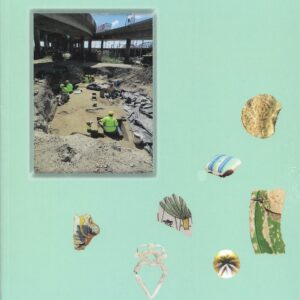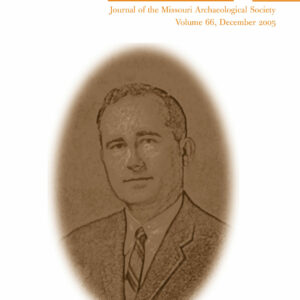The Missouri Archaeologist Volume 83
$12.00
The 2022 edition of The Missouri Archaeologist features a foreword by Neal H. Lopinot and the following articles:
Return to Tick Creek Cave (23PH145) in the Gasconade River Drainage by Terrell L. Martin
Trade Bells from Historic-Period Native American Sites in Missouri by John M. Connaway
Dugout Canoes from Missouri: Precontact and Postcontact Water Travel in Log Boats by Jack H. Ray
Description
Excerpt from the Foreword:
At the time, the 1965 article on Tick Creek Cave by Ralph Roberts comprised an important contribution to our understanding of precontact Archaic archaeology in the Gasconade River drainage, despite having relatively shallow and somewhat-mixed deposits. In that same year, Editor Bob Bray of the The Missouri Archaeologist also had an article published by Paul Parmalee on faunal remains from Tick Creek Cave and a much larger article by Bruce McMillan partially entitled “Gasconade Prehistory.” The latter resulted from a major survey (including a float survey) and limited testing of sites scattered throughout much of the Gasconade Basin in five counties. Unfortunately, the Woodland component(s) of the Tick Creek Cave site was given little attention, largely due to the omission of any analysis of ceramics recovered from the site. Now well over a half century later, Terry Martin has rectified that oversight in this volume. Martin provides a good description of a relatively “pure” ceramic assemblage assignable to the Late Woodland Maramec Spring phase. His detailed description of this assemblage should be of much value to those working in the Missouri Ozarks in the future.
The article by John Connaway on historic trade bells represents an important contribution to postcontact Missouri archaeology. Knowing little about trade bells, I found this article very interesting and learned much during the course of reading it, particularly that involving bell typology. I also remembered that we had recovered a few trade bells classified simply as “hawk bells” from the Delaware Town site (23CN1) in Christian County. As a consequence, I completed a couple of John’s Trade Bell Inventory forms, and information about the site and two bells were added to his article and the associated appendices. There are probably other trade bells in collections that have not been analyzed to date. If any of our MAS members or other readers of this journal have one or more bells, or know about their existence in public or private collections that have not been studied to date, it would be great if they could be added to John’s current inventory. Whereas the article in this volume focuses on sites in Missouri, his research has included bells from throughout and beyond the continental U.S.
Originally proposed by Michael Fuller, the 2022 theme for the Archaeology Month poster and the MAS Fall Symposium was established as “Dugouts of the Past.” The poster provided information on eight dugout canoes from Missouri and Arkansas, and the Symposium included a presentation by Jack titled “An Overview of Dugout Canoes Found in Missouri.” The latter topic was subsequently expanded into a full-length article on Missouri dugouts for this issue.




